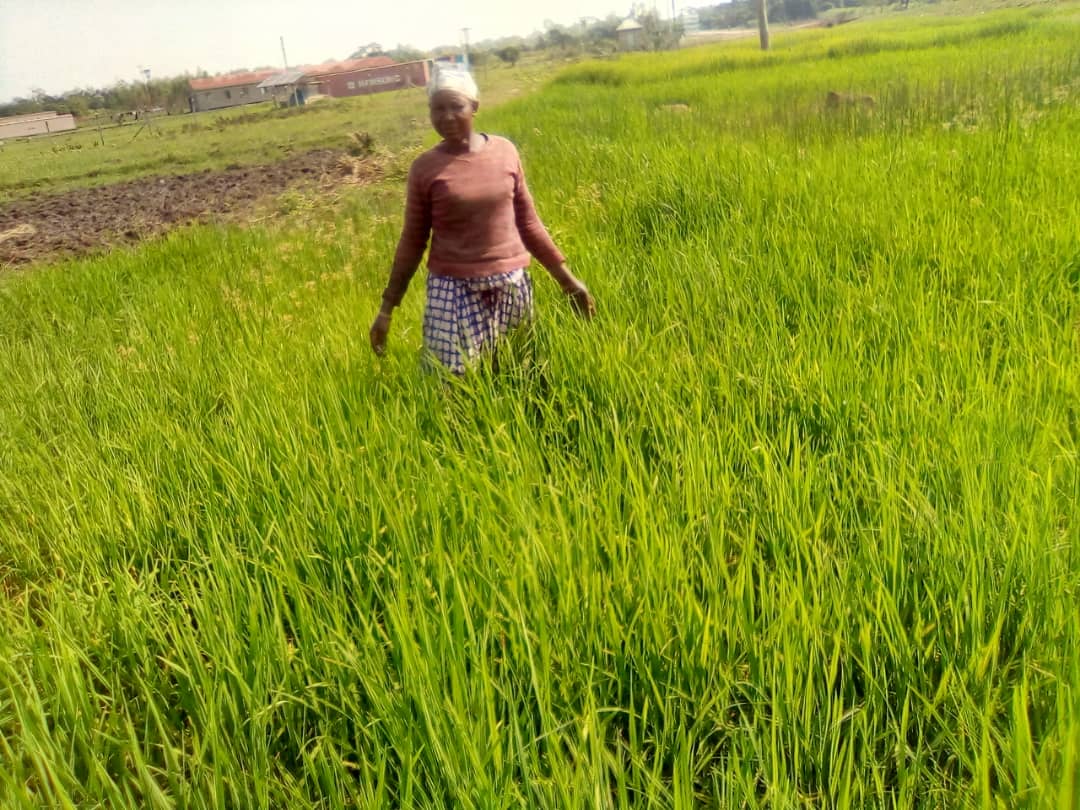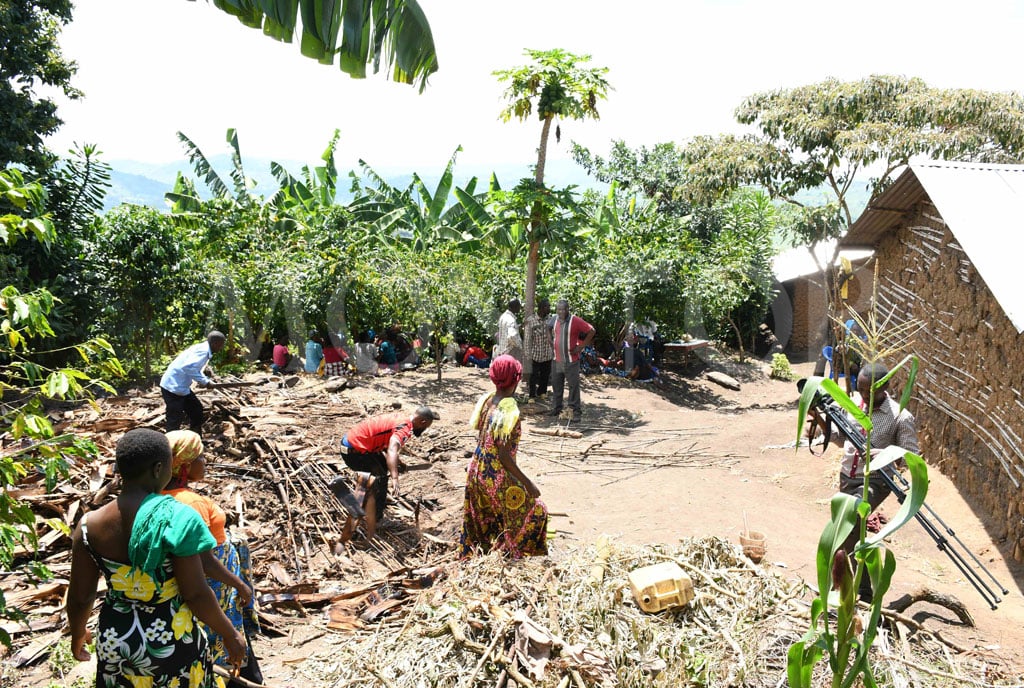Conservation vs poverty alleviation: Rice growers take the day

A section of rice farmers in Pallisa have continued to cultivate rice which have totally degraded Limoto wetlands. PHOTOS | MUDANGHA KOLYANGHA
What you need to know:
- Globally, rice growing accounts for an estimated 8 percent of all methane emissions from human activity.
- According to the Knoema Data Hub, by 2020 methane emissions of Uganda stood at 21,178.8 kt of carbon dioxide, up from 9,925.1 kt of carbon dioxide in 2001, growing at an average annual rate of 4.30 percent. Kolyangha Mudangha brings us this story of how rice growing is both a victim (sequester of carbon dioxide) of, and a contributor (methane), to climate change.
As the early morning mists clear, they give way to the stark reality of what wetlands in Bukedi sub-region look like today. Low-land rice growing, which now accounts for 80 percent of human activities in the wetlands, has inflicted terrible destruction.
Bukedi comprises the districts of Pallisa, Kibuku, Budaka, Butaleja, Tororo, and Busia, with the main wetlands systems of Limoto, Namatala and Mpologoma. However, rice growing is concentrated in Kibuku, Pallisa, Budaka and Butaleja, where the grain is a staple food for people in the urban centres.
Mohammad Samuka, Pallisa district’s natural resource officer, says rice cultivation increases emissions of methane and carbon dioxide, which in turn, contribute to global warming.
“Over the years, people have cleared up about 65 percent of the wetlands and when the fauna and flora, for whom these swamps were natural habitats, die and decompose, they emit gases into the atmosphere, which turn to methane. In the long run, a rise in temperatures will affect rainfall frequency and intensity in this district,” he says.
Abram Omasai, the senior wetlands officer for Pallisa district, says although wetland vegetation has a high regeneration rate, the destruction is too massive and will take years to reverse.
“The papyrus in the wetlands is responsible for absorption of carbon dioxide emitted by the decomposing matter. However, that papyrus has since been uprooted to make way for rice fields. The continued draining of the water and opening up the fields for cultivation bring up peat soil, which is formed from decomposing and organic matter. Opening up peat soil facilitates the release of methane buried underground. This contributes to climate change,” he says.
According to Kijali Kamwada, the natural resource officer for Budaka district, as is the case in Pallisa, 94 percnt of the district’s population ekes a living in Namatala wetland.

“These wetlands are carbon sinks but most of Namatala wetland has been taken up by rice cultivation.. The surface area of the wetland, which covers seven sub-counties, is 132 kilometres, but as of today, only 97 kilometres are left.,” he says.
Why farmers are still invading wetlands
In 2022, the government banned the growing of rice and other crops in wetlands across the country. At the time, district local government officials slashed and destroyed a number of rice paddies in some districts like Otuke.
Stakeholders argued that the president’s directive would affect the livelihood of 40,000 farmers, processors and traders. However, due to poor enforcement countrywide, rice growers are still invading the wetlands.
Farmers say the high poverty level in the region is the biggest factor driving people into the wetlands. According to the National Development Plan III, Bukedi sub-region is estimated to be the second poorest in Uganda, after Karamoja sub-region. The poverty rate stands at 43.7 percent, with a GDP per capita of less than $135.
Besides rice, there is no other major income generating cash crop from the sub-region. John Wakalire, a rice farmer in Namatala wetland, says moving into the swamp was not by his own making.
“You cannot meet the basic needs of your family unless you grab a portion of the wetland for rice growing. Without these swamps, believe me, the poverty would be worse than you see it now. Previously, we used to cultivate cotton, but we abandoned the crop because the price fluctuations in the market made it unprofitable,” he says.

The high unemployment rates have also driven young men and women into the wetlands. Apart from rice, the young men are also growing sugarcane, tomatoes and maize.
“I think if we did not have these wetlands, the crime rate would be very high in these communities. We understand that we are destroying the wetlands, but if the government is to kick us out, it should provide us with alternative means of making a living,” Wycliffe Wacha, a farmer says.
Fauza Nankoma, the Budaka district environment officer, says farmers prefer to grow rice in wetlands because the soil is rich and fertile.
“They have a mentality that high yields can only be achieved in the wetlands. They also say the rice grown in the wetlands is more nutritious and the one grown on other land. There is also flooding in some parts of the wetland because the vegetation has been cleared. Ironically, this is causing destruction of entire rice fields,” she says.
James Lawrence Okwakol, a rice farmer in Budaka, observes that the profits from the rice cannot be compared to the rain variations in the region.
“I have a two-acre piece of land in the swamp and I get between Shs2-3 million at the end of each harvest season. You cannot get this money in the upland areas, and that is why more farmers are invading the wetlands every day. However, with every year, we are experiencing the flooding and hot temperatures,” he says.
Hope for restoration
Several government interventions have been implemented to restore the degraded wetlands. One of these is the Building Resilient Communities, Wetland Ecosystems and Associated Catchments in Uganda. The grant-based project is intended to assist the government take climate change effects into account in managing wetlands, and to enhance the ability of farmers to deal with climate impacts.
The project will help restore critical wetlands and enhance the skills of people living near the wetlands to diversity their livelihoods and become more resilient to climate shocks.
Abram Omasai, the senior wetland officer for Pallisa district, says through the project, the district has come up with alternative livelihoods for the rice growers including, dairy and poultry farming to entice them out of the wetlands.
“The project has supported 40 beneficiaries with dairy farming technique and livestock, and also supported 27 rice farmers to become fish farmers. In the first phase of the project, the fish farmers harvested fish worth Shs66.7million and Shs37million in the second phase. These are viable alternatives that rice farmers should embrace as we evict them from the wetlands,” he says.
All wetlands in the country have peat soils, which when exposed during cultivation, release carbon monoxide and methane into the atmosphere. These gases, in turn, cause global warming.
Statistics show that the southwestern part of the country produces the highest amount of greenhouse gases, followed by the central part and eastern Uganda.
Stakeholders warn that the best way to restore the ecosystems of these wetlands is to evict people out of them.




